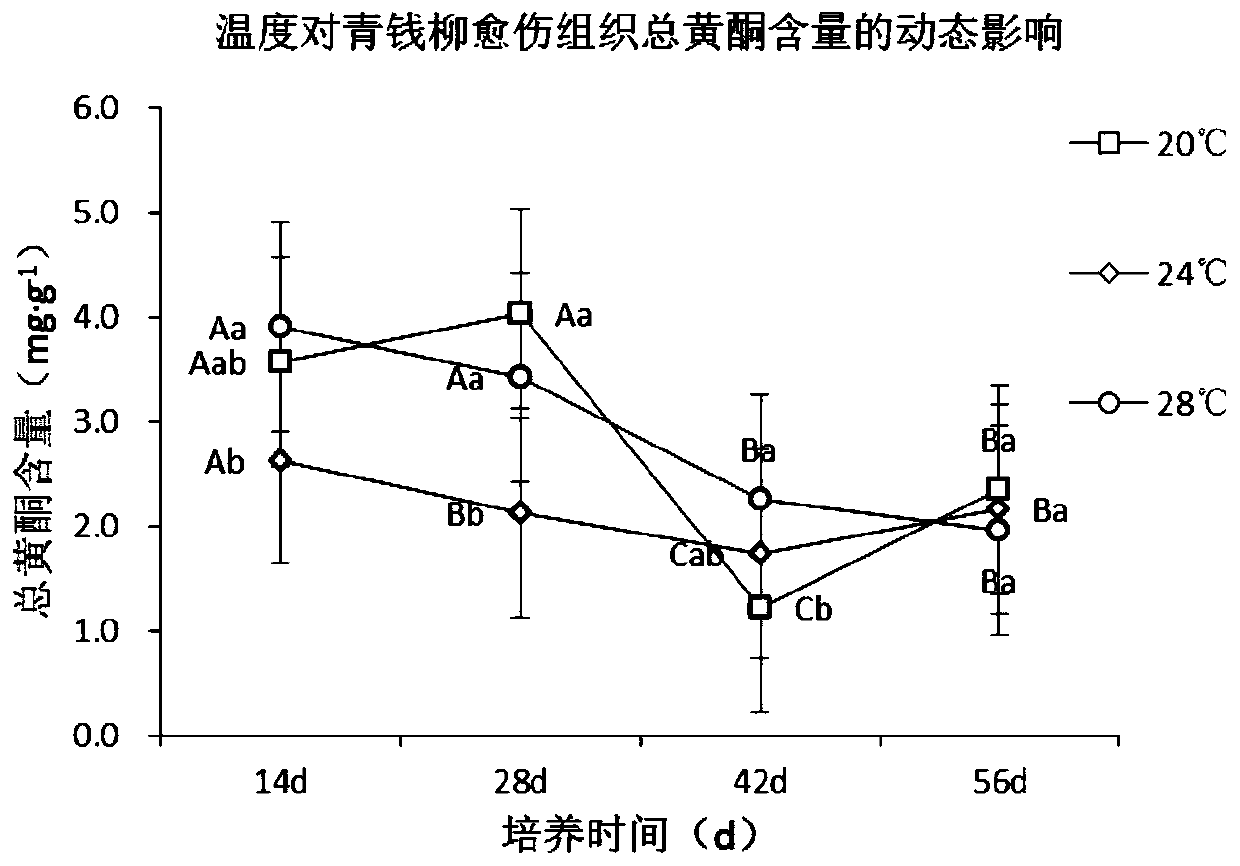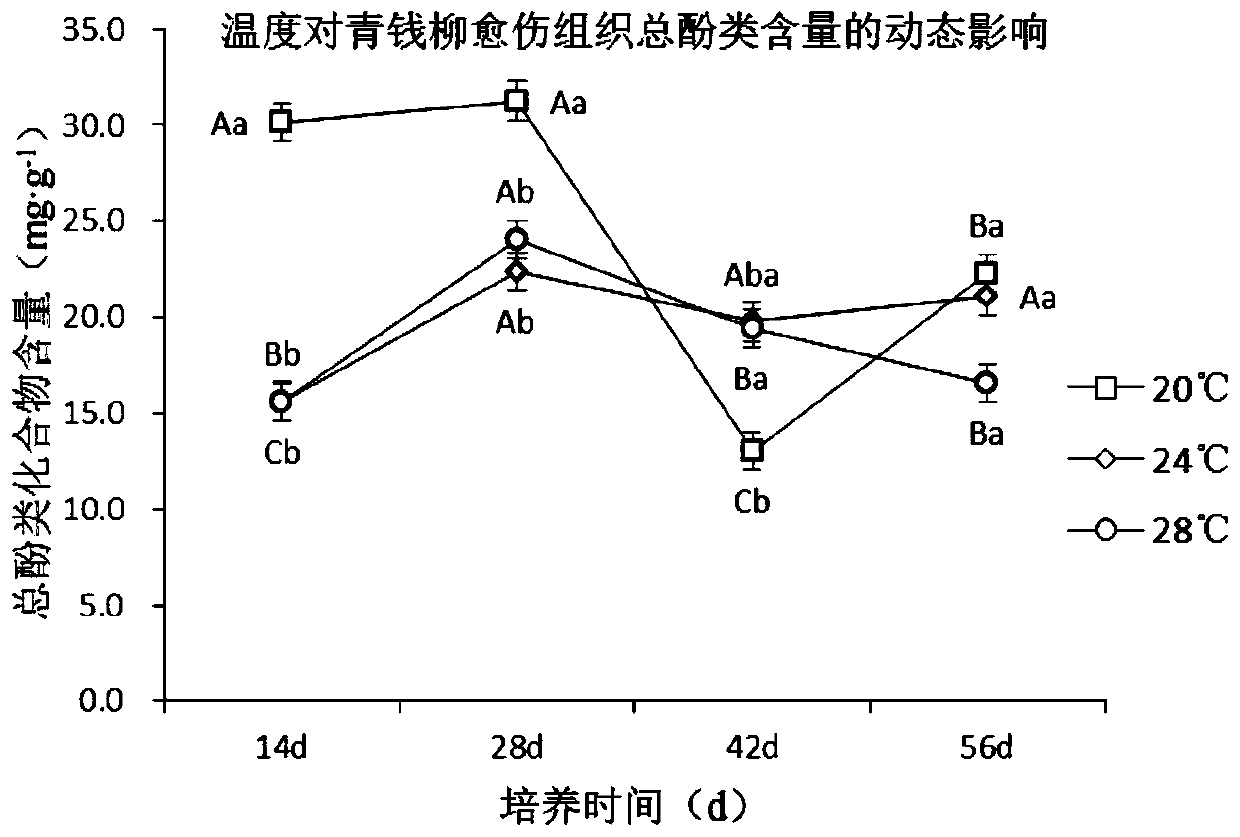Culture method capable of promoting cyclocarya paliurus callus growth and secondary metabolite accumulation
A technology for secondary metabolites and callus, applied in the field of plant tissue culture, can solve problems such as accumulation of secondary metabolites that are unfavorable for callus growth, and achieve the promotion of tight texture, rapid subculture, and low overall pollution rate. , the effect of inhibiting the production of phenolic substances
- Summary
- Abstract
- Description
- Claims
- Application Information
AI Technical Summary
Problems solved by technology
Method used
Image
Examples
Embodiment 1
[0037] Embodiment 1, disinfection method screening
[0038] Selection of stem segments: Cut semi-lignified bud stem segments with a length of about 3 to 4 cm from the top 1 and 2 nodes of the three-year-old stubble seedlings cultivated in the greenhouse on the 10th floor of the Biotechnology Building of Nanjing Forestry University in 2018, and keep 1 Axillary buds.
[0039]Material pretreatment: Trim off the leaves on the stems, rinse with tap water for 1-2 hours.
[0040] In order to screen out the best treatment combination of disinfection time for the stems of Cyclocarya paliurus, two disinfectants of 0.1% mercury liter and 5% sodium hypochlorite were selected for research on the disinfection treatment of Cyclocarya paliurus, and the disinfection of 0.1% mercury liter and 5% sodium hypochlorite 5 levels of time are used: 3, 5, 7, 9, 11 minutes. The experimental design is detailed in Table 1. After trimming and rinsing, the stem segments were placed on a clean workbench, ...
Embodiment 2
[0047] Embodiment 2, callus induction formula screening
[0048] In order to induce callus from stems and leaves of Cyclocarya paliurus, 6-BA (0.5, 1.0, 1.5 mg·L -1 )+NAA (0.05, 0.1mg·L -1 ) hormone combination; with WPM as the basic medium, design 6-BA (0.5, 1.0mg·L -1 )+IBA (0.05, 0.1mg·L -1 ) hormone combination is used for the callus induction of stem segment and blade, and the specific operations are shown in Table 2 below. Each test tube was inoculated with one material, 15 tubes were treated each time, and repeated three times. Observe every 10 days, and calculate the callus induction rate after 30 days of culture.
[0049] Table 2 Screening of callus induction formula of Cyclocarya paliurus
[0050] Table2 Selection of callus induction formula for C. paliurus
[0051]
[0052] Note: + indicates that the number of callus is average, ++ indicates that the number of callus is large, the same below.
[0053] Comparing the effects of different hormone combinations...
Embodiment 3
[0057] Embodiment 3, callus proliferation formula screening
[0058] Proliferation culture: using WPM as the basic medium, according to the formula results in Table 2, three formulas were screened out as callus proliferation formulas, and the specific formulas are shown in Table 3. Each test tube was inoculated with one material, 15 bottles were treated each time, and repeated three times. Observed every 10 days, counted callus increment and growth multiple after 30 days of culture, and counted the growth status of callus after 7 passages. (Growth factor = (weight after subculture once - weight before subculture) / weight before subculture)
[0059] Table 3 Screening of callus proliferation formula of Cyclocarya paliurus
[0060] Table3 Selection of proliferation coefficient formula for callus of C. paliurus
[0061]
[0062] Table 4 Callus growth status of Cyclocarya paliurus after 7 subcultures
[0063] Table4 Growth state of seven successive generations for callus of C...
PUM
 Login to View More
Login to View More Abstract
Description
Claims
Application Information
 Login to View More
Login to View More - R&D
- Intellectual Property
- Life Sciences
- Materials
- Tech Scout
- Unparalleled Data Quality
- Higher Quality Content
- 60% Fewer Hallucinations
Browse by: Latest US Patents, China's latest patents, Technical Efficacy Thesaurus, Application Domain, Technology Topic, Popular Technical Reports.
© 2025 PatSnap. All rights reserved.Legal|Privacy policy|Modern Slavery Act Transparency Statement|Sitemap|About US| Contact US: help@patsnap.com



